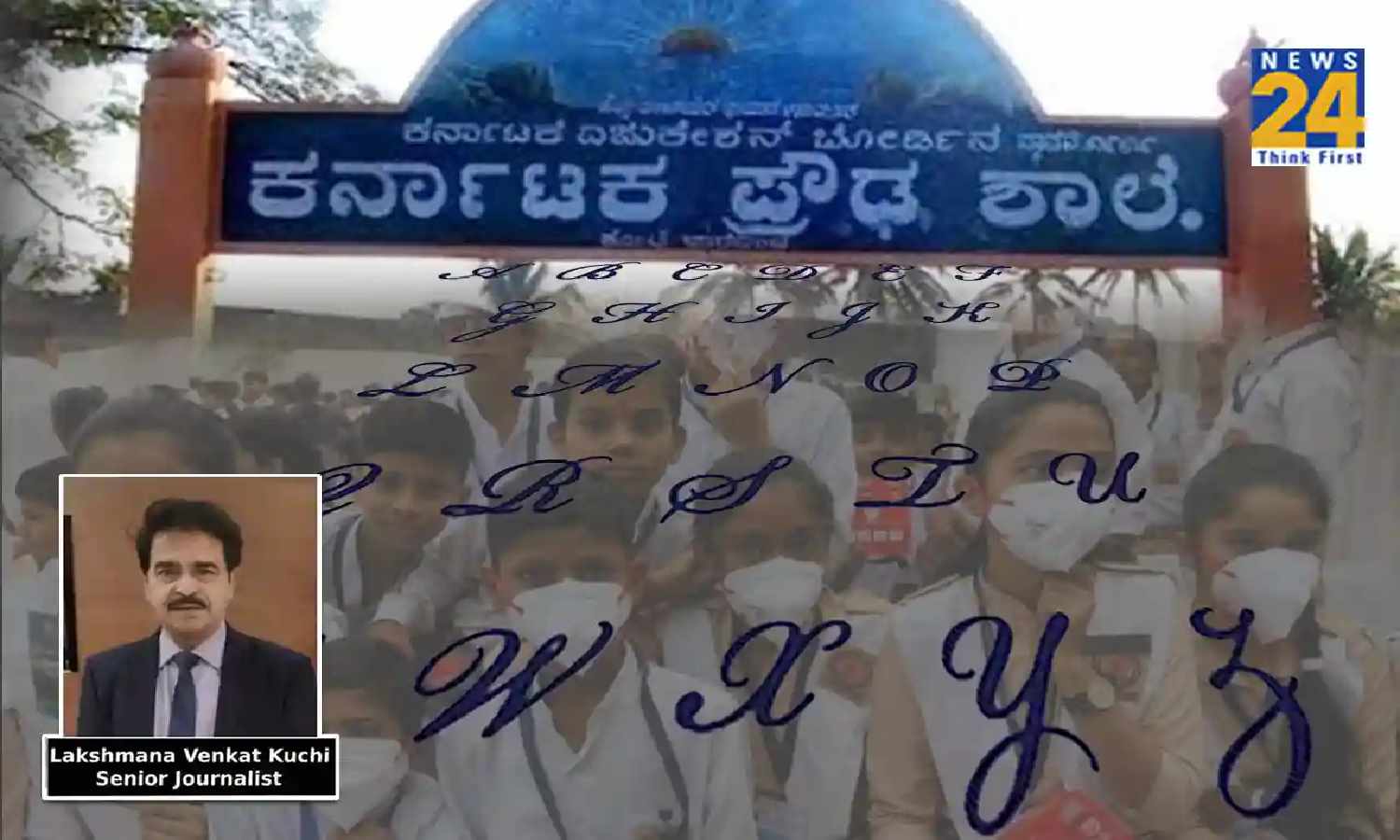Lakshmana Venkat Kuchi, Senior Journalist
@kvlakshman
Parents in southern states of Karnataka, Tamil Nadu, and Andhra Pradesh overwhelmingly vote for the Queens language as medium of studies for their wards in government schools – as indicated by the growing preference for English medium in schools. English has, over the years, become the language of aspiration and presents opportunities within and outside India. English gives a person a helping nudge in the race, even when other things like knowledge and skills are equal. Which is why, there was and is a great demand for the government-run English medium schools.
Incidentally, the private sector is making a killing from this growing craze for English medium education, especially in smaller towns and rural areas where “convents” are doing roaring business.
Why, in Karnataka last week, state education minister, ordered removal of cap of 30 students per class in English medium government schools and directed such schools to admit all those who applied for English medium instruction in school.
Now this growing demand for English medium, for sure, shows that the then Chief Minister HD Kumaraswamy was right in pushing English, even at the cost of annoying Kannada language activists when he introduced English medium from Class 1 itself in 2018.
What started as a pilot project -English medium – in some 400 government / government aided schools in Karnataka today has grown over 2000. Students, and their parents are asking for more – the demand is coming from the grassroots.
However, much needs to be done in terms of English language teachers and those who can teach other subjects in English, according to parents and teachers.
In neighboring Andhra Pradesh, Chief Minister Jagan Mohan Reddy risked running foul with Telugu language purists and activists when he ordered all colleges in the state to shift to English medium. It has been seen that English language proficiency gave an additional push to a person’s employability and an advantage over their competitors who are not familiar with English.
According to S Rajeev Krishna, Advisor to Andhra Pradesh Chief Minister, the reason for the change of medium was to ensure that all students are proficient in English language as it was the language of commerce and a global language that opened opportunities for them. The CM, he said, believed that greater proficiency in the English would make Andhra youth more competitive in the employment market – in India and abroad.
Challenges are many, as Andhra Pradesh government is now discovering – first and foremost challenge being finding the teaching staff on a scale required for the shift in teaching medium. But in one or two more years, the initiative would start to yield results –in terms of increased employability of the state’s youth.
Jagan Mohan Reddy also introduced English as a medium in government schools from Class 1 itself, like in Karnataka where the English medium schools are a bit hit, in urban as well as rural areas.
Tamil Nadu Chief Minister J Jayalalithaa had introduced English as a medium of instruction in some of its government schools way back in 2012. The government schools have English medium sections along with Tamil medium sections for each class. At present, TN has close to 6,000 government schools that offer English medium education. The biggest challenge for Tamil Nadu, like other states, is to get hold of the right talent to teach English and also to train those teaching in Tamil Medium to switch to English.
But it was none other than Prime Minister Narendra Modi, who as the Gujarat Chief Minister in 2007-08 had started “Society for Creation of Opportunity through Proficiency in English” in the state with an objective of training five lakh youth to master English in four years. Around that time even states like Rajasthan, Madhya Pradesh and Haryana gave greater importance to teaching English to its students.
(Lakshmana Venkat Kuchi is a senior journalist tracking social, economic, and political issues and takes a keen interest in sports as well. He has worked with prominent news organisations.)



